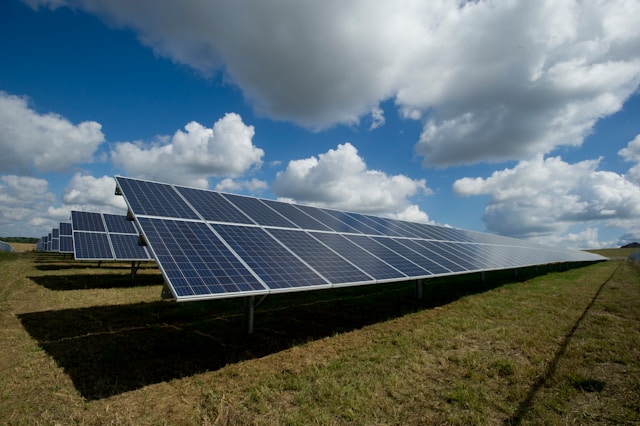Hey there, solar explorer! Stuck deciding between connecting your solar panels in parallel or series? No sweat—we’re here to simplify the puzzle. In this guide, you’ll uncover the ideal setup for your energy goals, environment, and system specs. We’ll demystify wiring methods, compare their strengths and limitations, and share actionable advice to help you choose confidently.

Grab your favorite drink, and let’s dive in!
Parallel vs. Series Wiring: What’s the Difference?
Let’s kick things off with a quick science recap. The terms “parallel” and “series” describe how solar panels link to form a circuit.
- Series Wiring: Panels connect end-to-end, like cars on a train.
- Parallel Wiring: Panels link side-by-side, branching into a shared pathway.
Why does this matter? Your choice impacts voltage (the system’s “push” of energy) and current (the energy “flow”). Let’s explore how.
Series Wiring: When to Chain It All Together
In a series setup, the voltage of each panel stacks, while current remains constant.
Example: Three 10V/5A panels in series deliver 30V total voltage but keep 5A current.
Advantages of Series Wiring
- Higher Voltage Efficiency: Ideal for inverters optimized for high-voltage input.
- Simpler Layout: Fewer cables and connections reduce clutter.
- Sunny Day Champion: Thrives in consistent, unshaded sunlight.
Drawbacks of Series Wiring
- Shade Sensitivity: A single shaded panel drags down the entire chain’s output.
- Low-Voltage Limitations: Not ideal for systems requiring high current at lower voltages.
Perfect for: Open, sun-drenched spaces with minimal shading.
Parallel Wiring: Flexibility in the Spotlight
With parallel wiring, current adds up, while voltage stays uniform.
Example: Three 10V/5A panels in parallel produce 15A total current but maintain 10V.
Advantages of Parallel Wiring
- Shade Resilience: One shaded panel won’t cripple the system.
- High-Current Output: Tailored for low-voltage, high-amperage needs (e.g., 12V batteries).
- Easy Expansion: Add panels seamlessly without redesigning the entire setup.
Drawbacks of Parallel Wiring
- Complex Connections: Requires more wiring, connectors, and planning.
- Heavy-Duty Gear Needed: Higher currents demand thicker wires and robust components.
Perfect for: Shaded areas, off-grid systems, or setups needing incremental growth.
How to Choose: Key Factors to Weigh
Still torn? Consider these three pillars:
- Equipment Compatibility:
Check your inverter or charge controller’s voltage specs. High-voltage gear? Lean toward series. Low-voltage demands? Parallel is your ally. - Environmental Realities:
Sunny backyard? Series maximizes efficiency. Partial shade from trees or buildings? Parallel safeguards performance. - System Scale:
Small setups often benefit from series simplicity. Larger installations needing scalability? Parallel offers flexibility.
Mix It Up: Hybrid Series-Parallel Systems
Why pick one when you can have both? A hybrid approach groups panels into series strings, then links those strings in parallel.
Example: Two groups of 3 panels wired in series, combined in parallel. This balances voltage and current while minimizing shade-related losses.
Best for: Medium-to-large systems where efficiency and redundancy matter.
Quick Comparison Chart
| Factor | Series | Parallel |
|---|---|---|
| Voltage | Adds up | Stays consistent |
| Current | Stays consistent | Adds up |
| Shade Tolerance | Low | High |
| Wiring Complexity | Simple | Moderate/Complex |
| Ideal For | Sunny, open spaces | Shaded areas or scalable systems |
Final Tips for Your Solar Journey
- Audit Your Site: Map sun exposure, shade patterns, and physical space.
- Consult Your Inverter Manual: Match wiring to its voltage/current sweet spot.
- Plan for Expansion: Leave room for future panels if you anticipate growth.
Still unsure? Reach out to a solar pro or drop a question below—we’re here to help!
And if you’re craving more solar hacks, [click here] for our free guide on optimizing rooftop energy.
Here’s to brighter days and smarter energy choices! ☀️⚡
FAQ’s
- Does shading affect series or parallel panels more?
Series systems lose more power if one panel is shaded. - Which wiring increases voltage?
Series connections add panel voltages together. - Can I mix series and parallel wiring?
Yes—hybrid setups balance voltage and shade resistance. - What’s better for small solar systems?
Series simplifies wiring; parallel suits partial shade. - How do I choose between them?
Prioritize inverter specs, shading, and energy needs.